Introduction
Land zoning, an essential urban planning tool, divides land into distinct districts to regulate its use. Each zone—residential, commercial, industrial, or agricultural—has specific permissible activities, fostering an organized development landscape. These regulations preserve the character of communities while promoting sustainable growth.
The impact of zoning can be seen in various cities worldwide, where changes in zoning laws have led to increased housing availability, denser development, and more inclusive urban environments. Zoning also plays a complex role in property rights, historically reflecting and reinforcing social inequalities. Despite challenges, zoning remains crucial for creating livable, walkable communities that integrate essential services and amenities.
It balances property development needs with property ownership rights, allowing for diverse land uses within a harmonious urban fabric. This article explores the purpose and importance of land zoning, different types of zoning classifications, how zoning regulates land use, key components of zoning laws, the alignment of zoning with master plans, and the challenges and future of land zoning. It also delves into the impact of zoning on property rights and community development, common zoning issues and challenges, and best practices for zoning and land use planning.
Through a comprehensive understanding of land zoning, communities can shape their built environments to be sustainable, equitable, and prosperous.
What is Land Zoning?
Land zoning, an essential urban planning tool, is the practice of dividing land into distinct districts to regulate its use. Each zone—residential, commercial, industrial, or agricultural—has specific permissible activities, fostering an organized development landscape. These regulations help preserve the character of communities while promoting sustainable growth.
The intricacies of zoning's impact can be seen in California, where single-family zoning has historically dominated. With a massive population spread across numerous municipalities, the state's zoning data reveal the prevalence of single-family zoning. However, shifts towards more flexible zoning have occurred, as evidenced in Auckland, New Zealand. After regulations were eased, the city witnessed the construction of over 20,000 new homes, demonstrating that zoning reforms can significantly increase housing availability.
Houston presents another case where changing minimum-lot-size requirements led to denser development and more affordable housing options. This approach counters the sprawl and segregation often exacerbated by stringent zoning laws, showcasing the potential for more inclusive urban development.
Recent policy developments, such as the Provincial Planning Statement (PPS) 2024 in Ontario, Canada, emphasize the need for zoning that aligns with infrastructure and economic growth, while also safeguarding environmental and cultural resources. This reflects a broader trend towards zoning laws that facilitate development, accommodate population growth, and protect valuable land.
Zoning's relationship with property rights is complex, with historical practices often reflecting and reinforcing social inequalities. The concept of 'whiteness as property' has evolved into the 'whiteness of property,' codifying the right to exclude, with zoning laws contributing to racial segregation and the limitation of property use by marginalized groups.
Despite these challenges, zoning remains a key tool for creating more livable, walkable communities, integrating residential areas with essential services and amenities. It balances the needs for property development with the rights of property ownership, allowing for the coexistence of diverse land uses within a harmonious urban fabric.

Purpose and Importance of Land Zoning
Land zoning serves as the foundation for efficient urban planning, steering the development of communities in a manner that safeguards the well-being of its residents and the integrity of the environment. Zoning laws are crafted to ensure that different land uses are compatible, reducing conflicts and fostering sustainable growth. These regulations help maintain the distinct character of various regions and prevent the degradation of the environment by incompatible land uses. A striking example is the city of Houston, which advanced development by reducing minimum-lot-size requirements, demonstrating that zoning can directly influence housing affordability and urban sprawl. Likewise, Minneapolis's trailblazing zoning reforms, driven by arguments on affordability and racial justice, underscore the importance of inclusive land use discussions. The Institute for Justice's Zoning Justice Project highlights the historical shift in zoning practices from their original intent, advocating for property rights and freedom. Recent news reflects the ongoing evolution of zoning policies, such as the Provincial Planning Statement (PPS), 2024, which emphasizes housing, development, and infrastructure while ensuring environmental protection. These cases and policies illustrate the multifaceted role of zoning in shaping our cities and the lives of those within them.
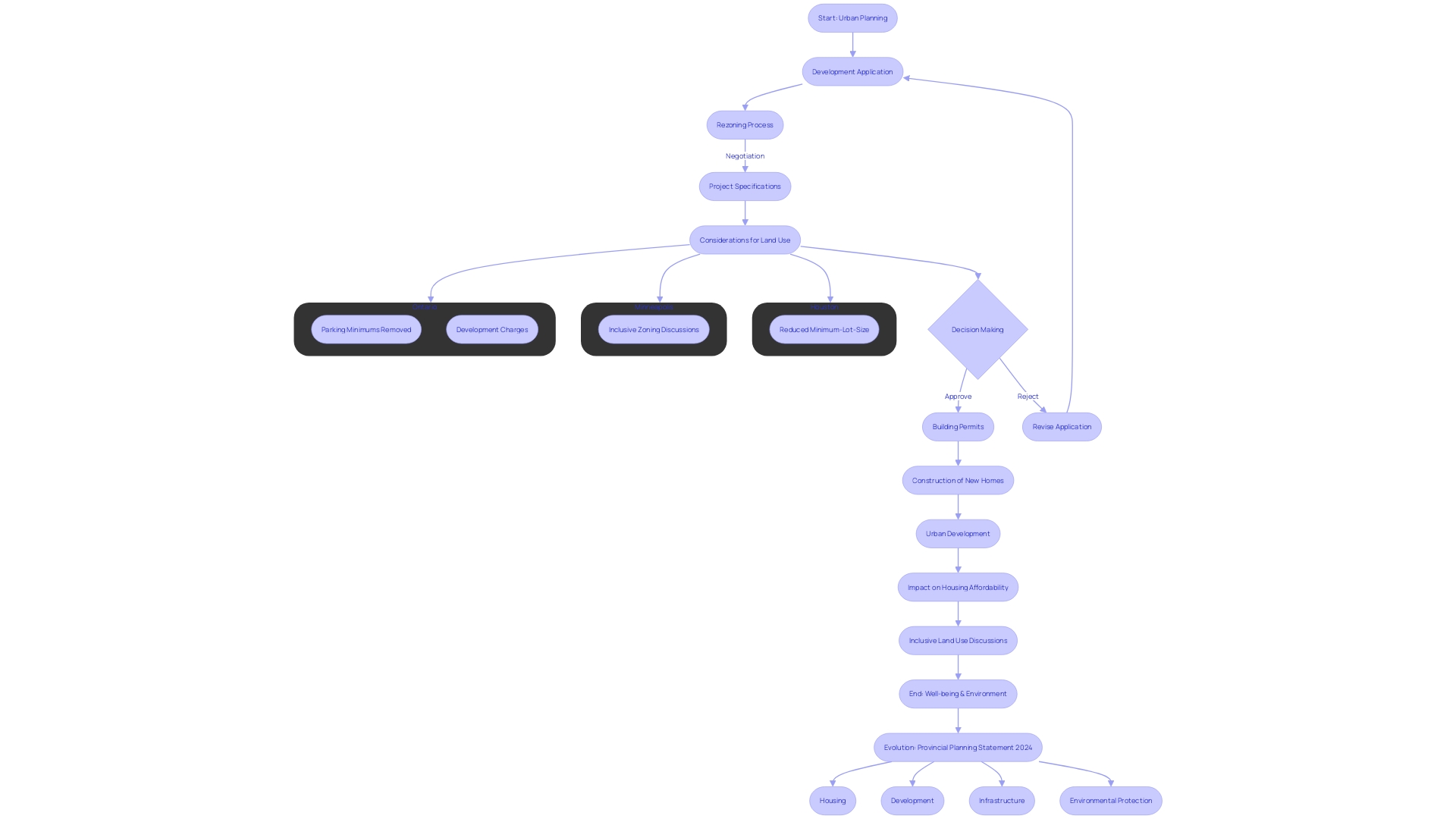
Types of Zoning Classifications
Zoning classifications serve as the blueprint for urban planning, delineating the permissible uses for land within different jurisdictions. Commonly, these classifications are segmented into residential, commercial, industrial, agricultural, and mixed-use zones. Within residential zoning, further subdivision is seen in categories such as single-family residential, multi-family residential, and high-density residential, each with specific regulations that govern land utilization, including building heights and setback requirements.
The intricacies of zoning are highlighted in California, where a detailed analysis of single-family-only zoning was conducted across its vast number of municipalities. For instance, Houston's approach to encourage development by reducing minimum-lot-size requirements showcases how zoning can influence urban sprawl, walkability, and housing affordability. Such policies have been critiqued for contributing to racial segregation and reliance on automobiles.
In Minneapolis, zoning reform was propelled by a coalition advocating for affordable housing, racial justice, and environmental concerns. The city's experience underscores the potential for zoning policy to address broader socioeconomic issues. The preliminary effects of these reforms on building and housing prices are being closely monitored, offering valuable insights for other regions considering similar changes.
The Charlottesville Planning Commission's recent efforts to increase residential density and grant more development rights demonstrate a dynamic approach to zoning, ensuring that ordinances evolve with the city's changing needs. The commitment to adapt and refine these regulations reflects an understanding of zoning as a living framework that guides our daily lives.
To grasp the scale of zoning's impact, consider that the National Zoning Atlas covers around six percent of jurisdictions in the United States, a figure that represents the living environments of 35 million people. However, to fully map out the nation's zoning practices, significant resources are required. With approximately 39,000 general-purpose local governments in the country, the variety in zoning approaches is vast and requires meticulous research to comprehend fully.
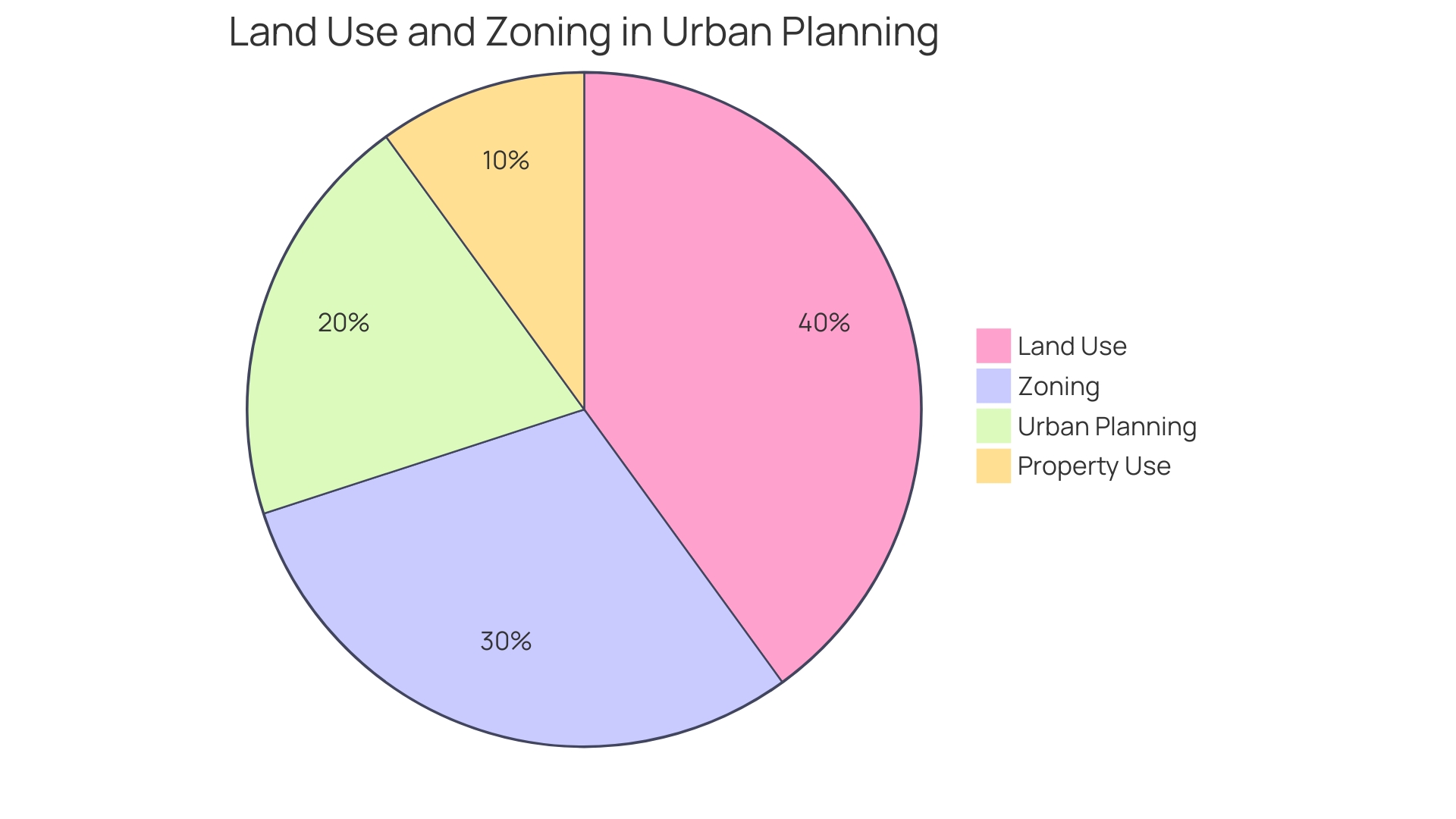
How Land Zoning Regulates Land Use
Zoning regulations are a critical framework within which land development must operate, delineating the permissible uses within various districts to ensure orderly growth and compatibility with established community standards. For example, residential zones generally allow for single-family homes while excluding commercial enterprises, and may include specific guidelines regarding setbacks, maximum building heights, parking provisions, and other developmental criteria.
The complexity of zoning laws is evidenced by the multifaceted scenarios they address. In California, a state with a vast and heterogeneous landscape, efforts to collect and analyze zoning data across its numerous municipalities highlight the intricate nature of zoning practices. With data from 473 municipalities and 46 unincorporated areas, the study of zoning becomes a monumental task. This granular approach to zoning emphasizes the need for a nuanced understanding of local regulations that can impact development prospects significantly.
Zoning and land use reforms are not only about enabling construction but also about addressing broader issues such as affordability, environmental sustainability, and social equity. The recent zoning reform efforts in Minneapolis, for instance, were propelled by advocacy that highlighted the intersection of housing, justice, and environmental concerns, and sought to include voices typically marginalized in land use discussions.
In Charlottesville, recent initiatives to rewrite zoning ordinances reflect a dynamic process that responds to changing conditions and aspirations for increased residential density. These changes are part of a larger strategy to encourage development that aligns with the city's Affordable Housing Plan and Comprehensive Plan. The city's approach demonstrates an evolving regulatory landscape that seeks to balance growth with affordability.
Historically, the American ethos of property rights included the fundamental rights to possess, use, and exclude others from one's property. This notion has evolved through legal precedents and societal shifts, with zoning laws being one expression of how communities regulate land use in the collective interest. However, as zoning practices have developed, they have often perpetuated racial and economic inequalities, prompting calls for reform to ensure that property rights and land use laws serve all members of society equitably.
In addressing climate change, urban sprawl is a significant contributor to greenhouse gas emissions, and efficient land use is vital for sustainable development. Statewide land use reform can serve as a potent climate action tool, promoting compact, mixed-use communities that reduce travel distances, enhance health outcomes, and increase housing affordability while conserving resources.
As we look to the future, the challenges and opportunities presented by zoning regulations will continue to shape the development landscape. These regulations are not static; they are subject to ongoing scrutiny and adaptation as cities like Minneapolis and Charlottesville work towards creating more inclusive, sustainable, and affordable communities.
Key Components of Zoning Laws
Understanding zoning laws is crucial for navigating urban development and property rights. These laws are composed of zoning maps, which illustrate the division of a jurisdiction into distinct districts, each with its own set of rules. Zoning ordinances provide the framework for what is permissible within each district, detailing regulations on land usage, building setbacks, lot sizes, and other structural criteria. These ordinances serve as the legal backbone to zoning laws, ensuring the orderly development of communities and safeguarding specific areas from incompatible uses. Zoning boards or commissions play a pivotal role in this system, administering the rules, reviewing development applications, and, when necessary, granting exceptions to accommodate unique circumstances.
Zoning has evolved significantly since its inception in Los Angeles in 1904. Initially devised as a means to protect and promote property rights, zoning in America has become a complex tool for city planning. It balances individual liberty with public welfare by segregating land uses to prevent conflicts and preserve community character. However, its rigidity in separating uses can also impede housing affordability and diversity. For example, Somerville, Massachusetts, a city lauded for its walkability and cultural vibrancy, faces high property prices, indicating strong market demand that is challenged by zoning constraints.
The Institute for Justice's Zoning Justice Project critiques modern zoning for straying from its original purpose and contributing to social and economic issues. By advocating for property owners' rights and challenging overly restrictive zoning practices, it pushes for reforms that align more closely with America's foundational principles regarding property use.
Recent legislative efforts reflect a shift towards more flexible zoning to address housing shortages and community needs. Saanich and Cumberland mayors have endorsed new housing legislation that promotes multi-unit housing in traditionally single-family zones, recognizing the need for diverse housing options. Similarly, New York City's proposed changes could significantly increase housing development, showcasing a move towards more adaptive zoning practices that can accommodate growth and change.
As zoning continues to shape our cities, it's essential to remain informed about its principles and impact on property rights. Whether it's a property owner looking to develop land or a city planner designing the urban landscape, the intricacies of zoning laws play a fundamental role in the evolution of our built environment.
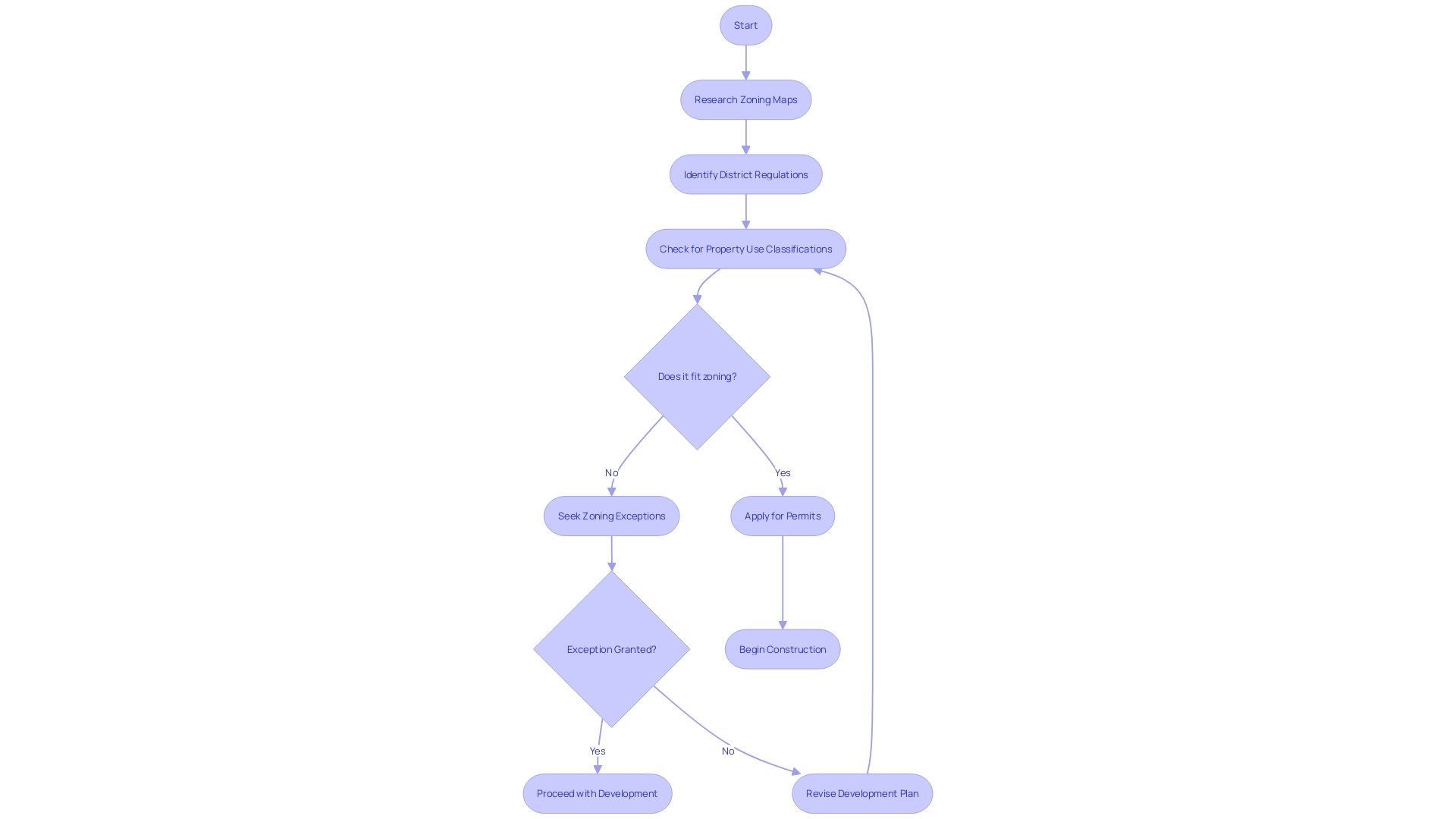
Zoning and Master Plans: Alignment and Integration
Land zoning is a critical tool used to shape the development and growth of communities, ensuring that it aligns with a jurisdiction's comprehensive plan. This plan serves as the long-term vision for the area, providing strategic direction for land use, transportation, infrastructure, and more. Zoning regulations are crafted to support the comprehensive plan's goals, maintaining consistency with the community's overarching vision for its future.
For example, the Orange Code initiative, embracing placemaking and context-based regulations, reflects a proactive approach to manage the anticipated growth of a region that expects to see its population increase by 700,000 by 2050. Similarly, the introduction of a pattern book in certain zones aims to guide the construction of smaller-scale housing units like duplexes and quadplexes, ensuring they enhance the public realm and do not detract from the character of the streetscape.
Furthermore, the inclusion of food equity in the title of a comprehensive plan chapter highlights the evolving priorities within community planning. Ensuring adequate access to nutritious and affordable food is increasingly seen as an integral part of the planning process.
The National Zoning Atlas project, which has mapped out zoning jurisdictions covering 35 million people—only six percent of the country—underscores the enormous scale of zoning regulation. With around 39,000 local governments to consider, the diversity of zoning approaches across the country is significant. This initiative underscores the need for more resources to fully understand and standardize zoning practices.
In conclusion, zoning is not just a regulatory framework but a dynamic instrument that evolves with the needs and goals of a community. It is a reflection of the community's values and priorities, and it is essential for managing growth responsibly.
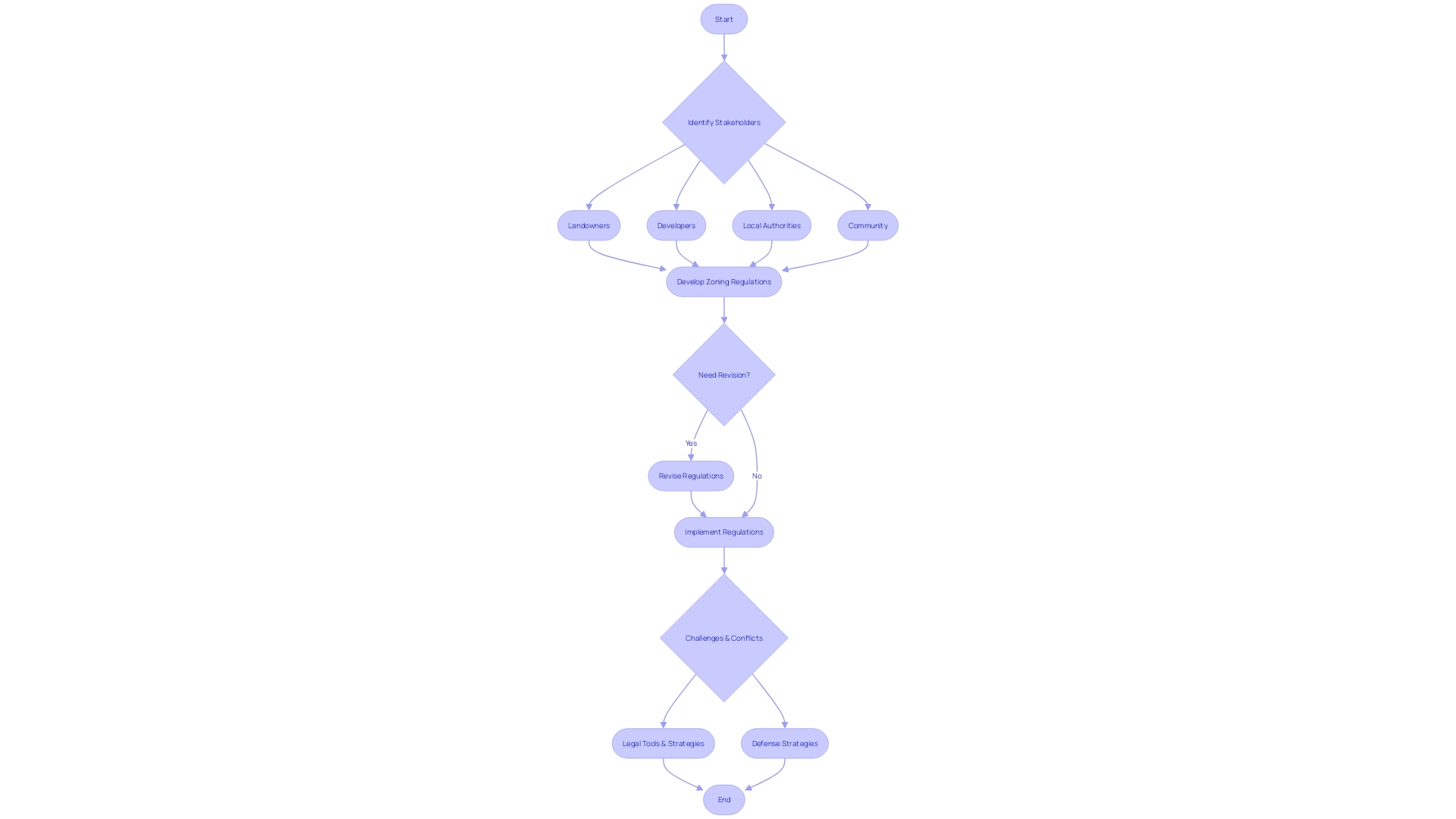
Land Use Element in Comprehensive Planning
Land use elements within comprehensive plans are pivotal for guiding zoning and development, with an eye toward sustainable growth and the preservation of open spaces. These elements serve as a blueprint, delineating the mix of land uses that municipalities envision for their communities. By doing so, they not only shape the immediate landscape but also address broader challenges such as climate change and housing shortages. For instance, the Community Environmental Council's framework for Santa Barbara highlights the pressing need to integrate environmental considerations into land use planning, with a particular focus on the city's downtown revitalization. Similarly, the Provincial Planning Statement of 2024 articulates policies that strike a balance between development needs and environmental protection, including directives to steer clear of hazard-prone areas.
Strategies outlined within these plans often emphasize the creation of compact, mixed-use communities. Such urban design reduces travel distances, minimizes land consumption, and supports the construction of energy-efficient buildings, contributing to significant reductions in greenhouse gas emissions. This approach aligns with the objectives of recent legislative actions, like those in Washington State, which underscore the importance of land use policy in climate action plans.
Understanding property rights, including the rights to possess, use, exclude, and transfer property, is also a critical component. Historically, zoning laws have been influenced by discriminatory practices, but contemporary zoning aims to support the housing industry by dictating permissible land uses within specific zones. For example, the Los Angeles zoning ordinances of 1904 and the New York City zoning resolution of 1916 were early examples of such regulations. Today's zoning laws continue to evolve, reflecting a community's current values and priorities, which are often expressed through public consultations and policy discussions.
The evolution of property rights over time illustrates the significance of land use planning in shaping societal norms and addressing inequalities. As communities grow—like the projected population increase in one county to over 2 million residents by 2050—strategic land use planning becomes even more essential. It's through these comprehensive plans that communities can express their vision for the future and lay the groundwork for sustainable, equitable development that meets the needs of all residents.
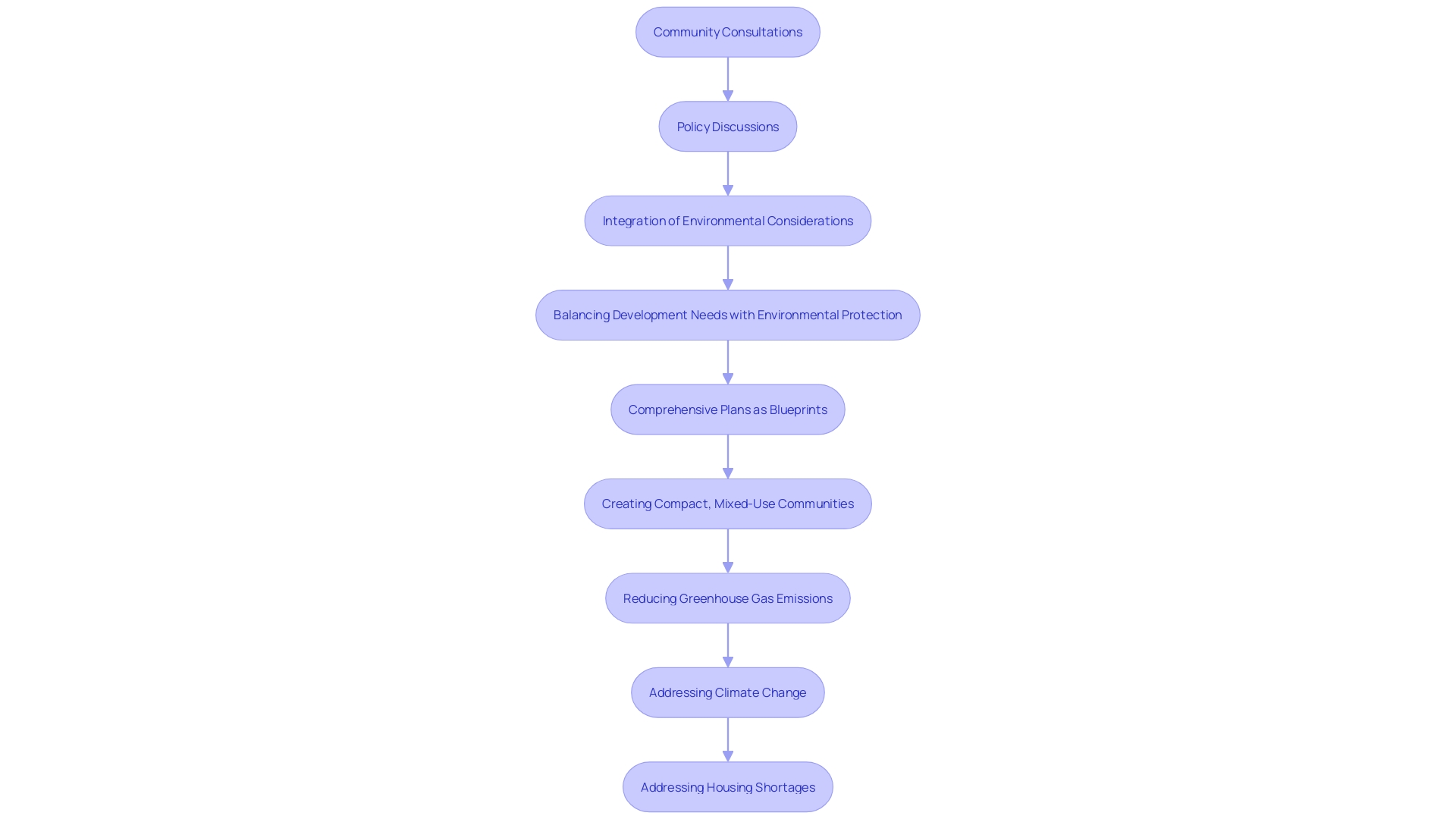
Build-Out Analysis and Existing Zoning
A build-out analysis serves as a critical tool for understanding the potential for growth within a given area, considering the constraints imposed by current zoning regulations. This meticulous process evaluates the maximum number of structures that could be constructed, their dimensions, and the resultant population density these buildings could support. Such an analysis is pivotal for planners and policymakers to grasp the full impact of existing zoning laws, and to pinpoint discrepancies that could hinder future land use objectives.
The National Zoning Atlas project, which has mapped out zoning regulations for approximately 6% of U.S. jurisdictions where 35 million people reside, underscores the vastness and complexity of zoning across the nation. With roughly 39,000 general-purpose local governments in the United States, the project highlights the need for extensive resources, staff, and time to thoroughly analyze zoning differences and their implications on development.
This analysis is not just theoretical; it's an actionable guide that can shape zoning amendments, infrastructure development, and other vital planning initiatives. For example, Ontario's Provincial Planning Statement (PPS) 2024 illustrates how such strategies are operationalized at a municipal level, directing development in a manner consistent with provincial policies and addressing key issues like housing, economic development, and environmental protection.
Indeed, zoning capacity is a significant factor in urban development, as noted by Vishaan Chakrabarti in the New York Times. His exploration of New York's potential for housing expansion, while adhering to existing neighborhood character and proximity to transit, revealed the challenges of significant development under such constraints. This analysis suggests that transit-oriented development, which often results in higher-density living than is typical for the area, can greatly surpass these limitations, offering a model for other regions experiencing rapid growth.
The criticality of efficient urban development is further emphasized by its impact on climate action. Urban sprawl contributes significantly to greenhouse gas emissions, highlighting the necessity for compact, mixed-use communities. As we face a housing shortfall and anticipate substantial population growth, the way we plan and build our communities will have profound implications not only for housing affordability and availability but also for our environmental footprint.
In summary, build-out analysis is an invaluable tool that informs the strategic direction of urban development, ensuring that land use regulations align with broader goals such as housing availability, economic growth, and climate resilience.
Land Use Demand Projections and Future Development
The intricate dynamics of land zoning are central to shaping sustainable communities and fostering economic vitality. As urban sprawl contributes to roughly one-third of global greenhouse gas emissions, the importance of strategic land use becomes ever more apparent. Through careful consideration of growth patterns and the integration of mixed-use developments, we can significantly reduce our carbon footprint. Such planning creates compact communities, enhancing walkability and energy efficiency, while reducing the need for extensive travel and land consumption.
In the face of urban expansion, local and state regulations are evolving. With a projected need to construct millions of new homes to meet the demand, zoning reforms are crucial. For instance, Charlottesville's Planning Commission is revisiting zoning ordinances to increase residential density and promote affordable housing, a testament to the agility required in land use planning.
Notably, the expansion of building performance standards across U.S. jurisdictions underscores the shift towards sustainable development. By 2024, over 35 jurisdictions will have enacted these standards, emphasizing the lifecycle emissions of buildings rather than just their initial design and construction.
This proactive approach to zoning and land use is echoed in the comprehensive updates to local governments' plans, as seen in Washington State's recent climate planning mandates. Such policies are not just about regulation but about fostering communities that are sustainable, healthy, and equitable.
At the global scale, the vast majority of our planet's habitable land is already in use, serving multiple functions from agriculture to urban development. This necessitates a judicious approach to land use—balancing the needs for food, fuel, and natural capital—while ensuring that our environmental footprint is minimized for future generations.
As we chart the course for urban development, input from diverse stakeholders is vital. In Orange County, the Land Use Plan 2050 process engages the community to envision a future that reflects desired characteristics and accommodates the anticipated population increase.
In essence, zoning and land use regulations are more than just tools for spatial organization; they are integral components of our collective response to climate change, housing shortages, and the pursuit of sustainable growth. It is through these measures that we can steer our communities towards resilience and prosperity.
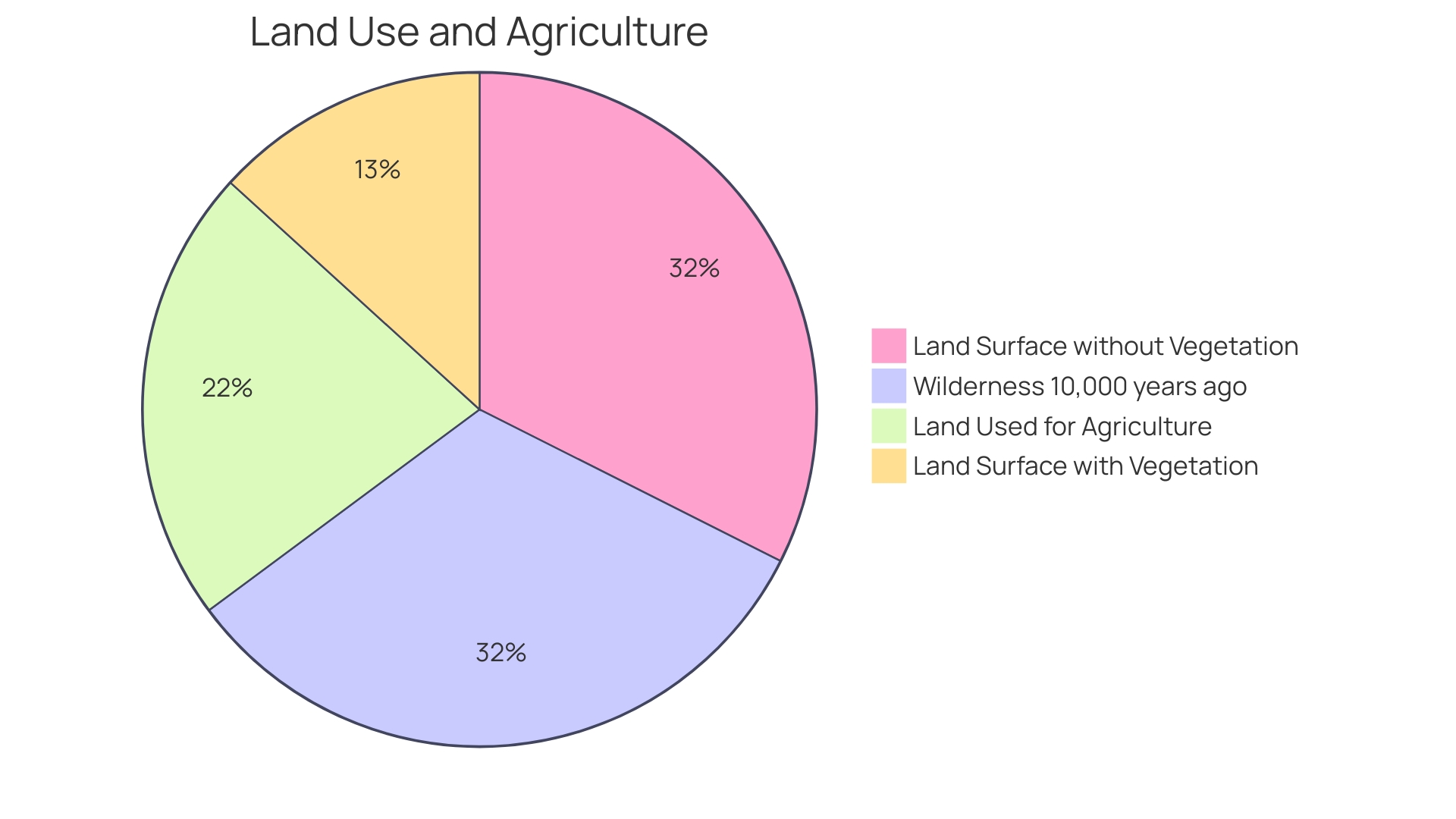
Impact of Zoning on Property Rights and Community Development
Zoning regulations intricately weave through the fabric of property rights, shaping not only the physical landscape of communities but also the very essence of property ownership. The roots of American property rights are deeply entrenched in the belief that individuals have an inherent right to use their property as they see fit. This concept has been challenged with the advent of zoning laws, which delineate usage boundaries and prescribe permissible activities on one's own land.
These zoning boundaries, while established with the intention of orderly development, often emerge as arbitrary lines that compartmentalize our daily lives into zones where we can reside, work, and relax. Such regulations can significantly sway property values and restrict owners from exploiting their land to its full potential.
A stark example is seen in Claremont, New Hampshire, where a landlord was compelled to evict long-standing tenants due to zoning code violations, illuminating the distressing intersection of zoning and housing crisis. Moreover, the evolution of property rights has transcended the mere surface to encompass the air above and the ground below, reflecting a three-dimensional perspective enshrined in modern property title systems.
The pursuit of public welfare through zoning has also come under scrutiny. Critics argue that the term 'public welfare' has been manipulated to justify arbitrary and preferential zoning limitations that stifle housing affordability and innovation in community development. Instead, a shift towards a simplified 'base code' has been proposed to align zoning regulations with more objective and unambiguous criteria.
While zoning plays a crucial role in the orderly and safe development of communities, its impact on property rights is profound and often contentious. The challenge lies in achieving a balance that respects individual rights while fulfilling the collective vision for community growth and development.
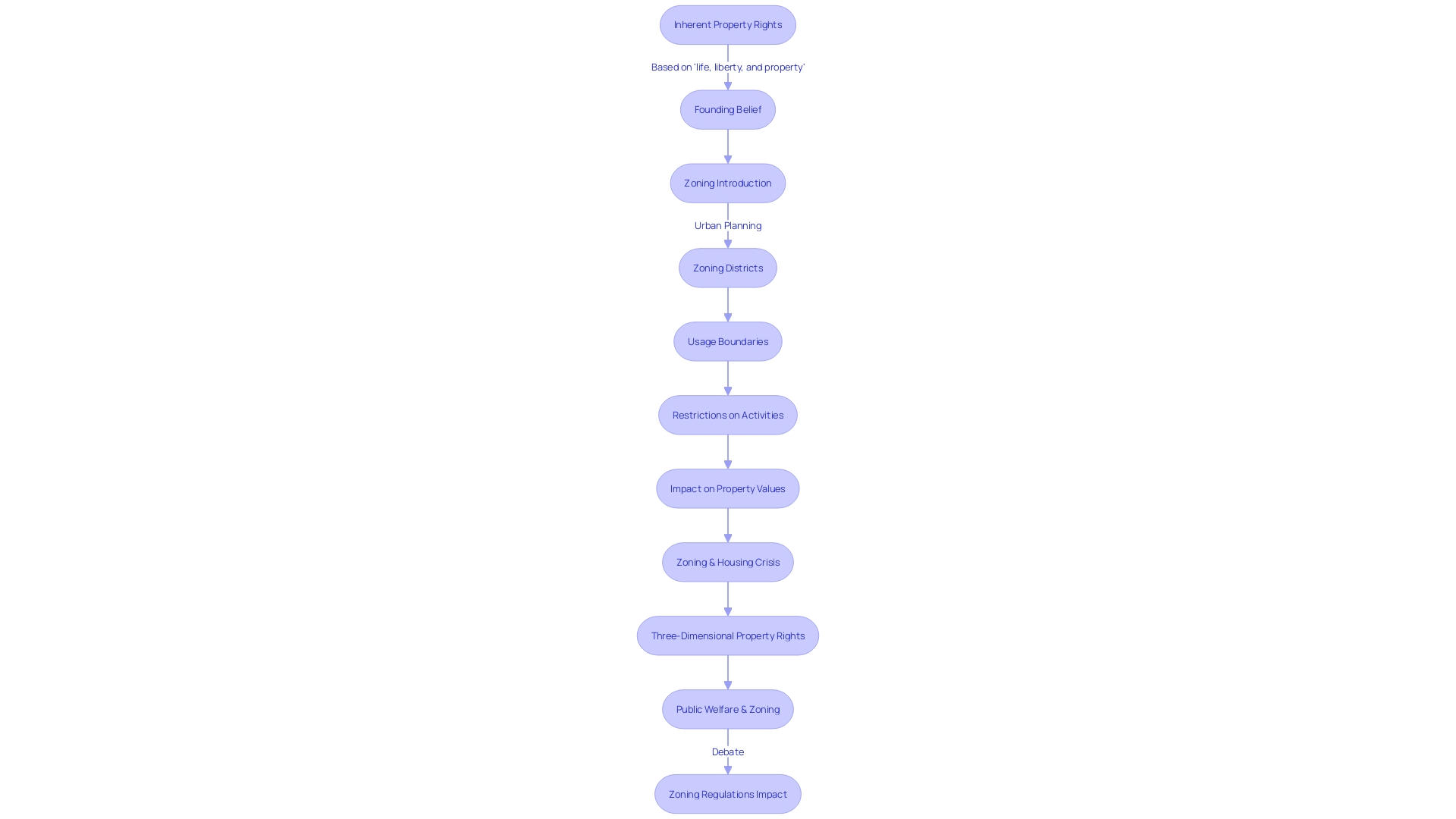
Common Zoning Issues and Challenges
Land zoning intricately shapes the fabric of our communities, defining where we reside, work, and enjoy leisure. This system of categorized spaces, though crucial for urban planning, often leads to a host of challenges. Landowners find themselves navigating a complex web of zoning laws that dictate property use, causing tensions when private aspirations clash with public regulations. Developers may face obstacles from non-compliance issues to infrastructure deficiencies that hinder desired property developments. Moreover, as societal needs evolve, zoning regulations can become outdated, necessitating revisions to accommodate contemporary urban life.
For instance, recent zoning code rewrites, like those initiated in Charlottesville in 2021, aim to address such challenges. These reforms, guided by comprehensive plans and targeted housing strategies, seek to increase residential density and offer incentives to developers for creating below-market housing. However, changes are not without contention. Legal challenges and public opposition can delay or alter reform trajectories, emphasizing the need for robust defense strategies for zoning changes. Professor Brian J. Connolly of the University of Michigan highlights the importance of navigating legal tools and procedures to successfully implement and defend zoning reforms.
The dynamic nature of zoning is further underscored by individual cases, such as developer David Marks' experience with Ashford Borough Council's rejection of his proposed sustainable home. Despite community support, the council deemed the project unsustainable and lacking in exceptional design, illustrating the discretionary power local authorities hold over land development.
Zoning regulations, thus, are not just lines on a map but powerful tools that govern daily life. They underscore the balance between individual property rights and the collective vision for a community's growth and character. As urban landscapes continue to evolve, so too must our understanding and application of zoning laws to ensure they serve the greater good while respecting personal liberties.

Best Practices for Zoning and Land Use Planning
Jurisdictions harnessing best practices in land zoning and use planning can catalyze the creation of dynamic, sustainable communities. This starts with comprehensive land use studies, which are instrumental in understanding the unique needs and potential of an area. Engaging the community in the planning process is not just beneficial but essential, as it fosters a collaborative environment where visions are shared and concerns addressed. With the ever-evolving nature of urban and suburban landscapes, jurisdictions must ensure that zoning regulations are not static; they should be regularly updated to reflect changing community needs and priorities.
Promoting mixed-use development is another key strategy. Such developments can revitalize neighborhoods, creating vibrant hubs where living, working, and leisure activities coexist harmoniously. These spaces are characterized by shorter travel distances and a pedestrian-friendly environment, enhancing quality of life and reducing carbon footprints.
The importance of sustainability in zoning decisions cannot be overstated. In facing the global challenge of climate change, efficient land use planning stands out as a powerful tool. For instance, urban sprawl alone contributes to one-third of all greenhouse gas emissions. By virtue of thoughtful zoning, communities can encourage development patterns that conserve resources, minimize environmental impact, and provide for the well-being of residents.
Case studies from across the globe, such as the transformation seen on Aramoana Avenue in Devonport, New Zealand, demonstrate the tangible benefits of such zoning practices. After regulations were relaxed, over 20,000 additional homes were constructed, countering the housing shortage and fostering community growth. Similarly, Houston's reduction of minimum-lot-size requirements exemplifies how regulatory adjustments can combat sprawl, increase affordability, and promote inclusivity.
Current news reflects an ongoing commitment to this ethos. For instance, the Provincial Planning Statement (PPS), 2024, outlines a vision for land use that aligns with compact, mixed-use community goals. It emphasizes the need for housing supply, development-ready land, and infrastructure to support growth while safeguarding environmental and cultural assets.
These examples underscore the effectiveness of a forward-thinking zoning framework. By prioritizing flexibility, community involvement, and sustainability, jurisdictions can indeed foster the long-term prosperity and well-being of their communities.
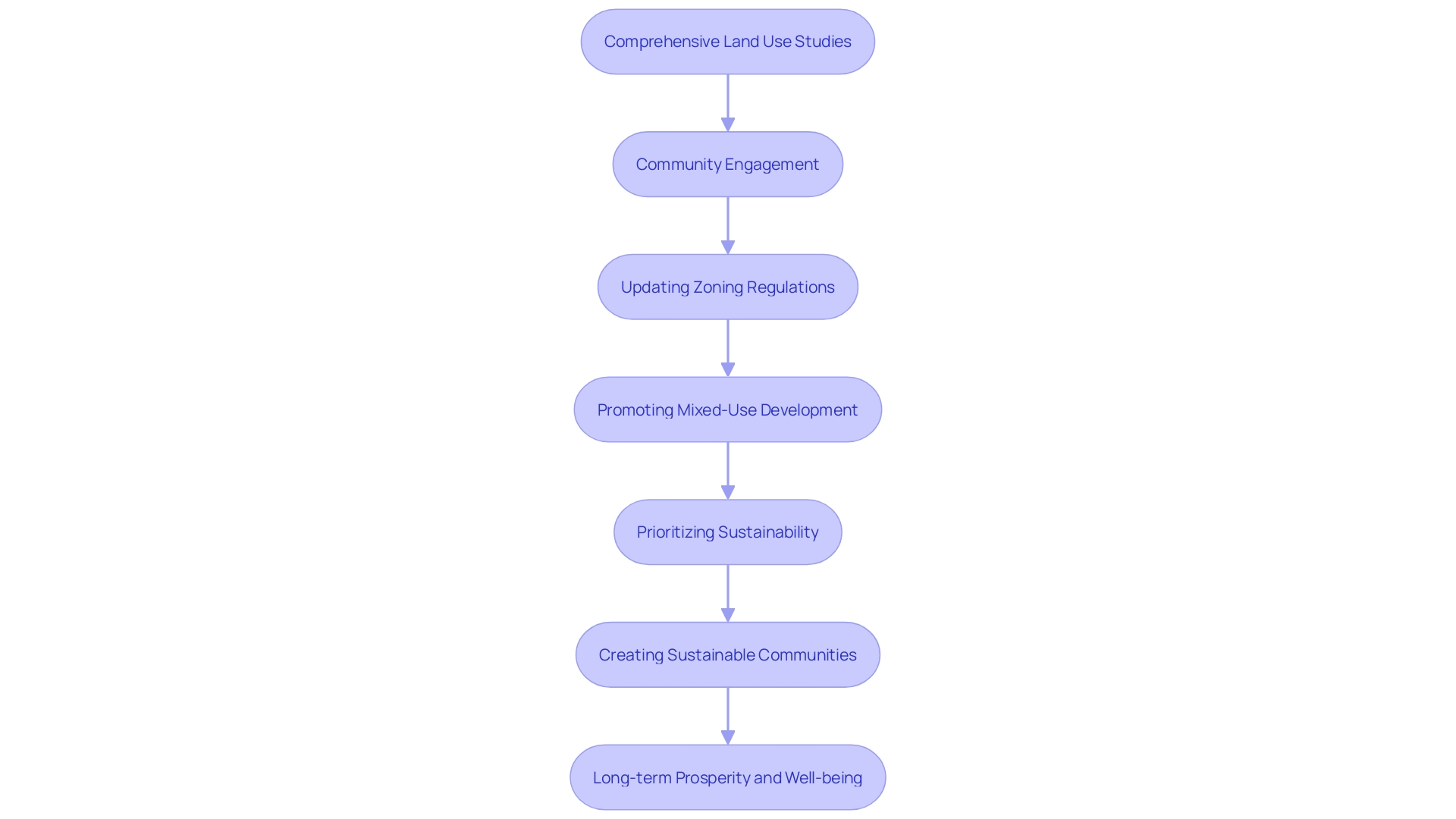
Conclusion
Land zoning is a crucial urban planning tool that regulates land use and fosters organized development. It promotes sustainable growth while preserving community character. Changes in zoning laws have shown positive outcomes, such as increased housing availability and more inclusive urban environments.
Zoning strikes a balance between property development needs and ownership rights, allowing for diverse land uses within a harmonious urban fabric.
Zoning ensures that different land uses are compatible, reducing conflicts and preserving the environment. Reforms driven by affordability and racial justice arguments highlight the importance of inclusive land use discussions. Zoning classifications provide a blueprint for urban planning, with residential, commercial, industrial, agricultural, and mixed-use zones being common categories.
Zoning regulations play a critical role in regulating land use and ensuring orderly growth. They specify permissible activities within districts, including land usage, setbacks, and building heights. Zoning and land use reforms address broader issues like affordability, sustainability, and social equity.
They strive to balance individual property rights with the collective vision for community development.
Zoning aligns with comprehensive plans, shaping community growth and development. Efficient land use planning is crucial for addressing climate change, housing shortages, and creating sustainable communities. The impact of zoning on property rights is complex, with regulations influencing property values and usage restrictions.
Common zoning issues include navigating complex laws, addressing non-compliance, and revising outdated regulations. Best practices involve comprehensive studies, community involvement, and promoting mixed-use development. Sustainability is a crucial consideration, as zoning can contribute to reducing greenhouse gas emissions and enhancing well-being.
In conclusion, land zoning is vital for creating sustainable, equitable communities. It balances property development needs with ownership rights, allowing for diverse land uses. By understanding the purpose and importance of zoning, communities can shape their environments to be livable, walkable, and prosperous.




